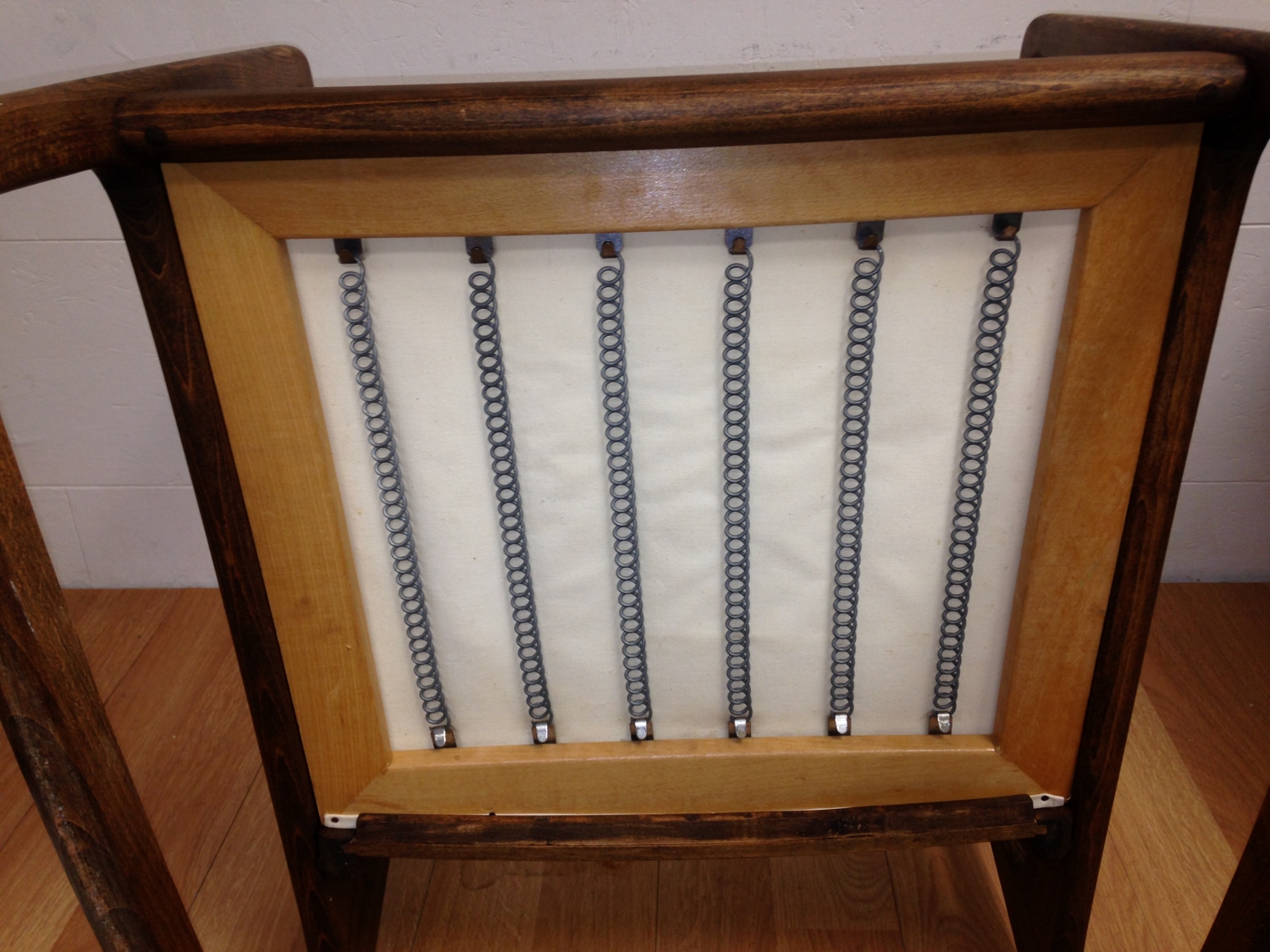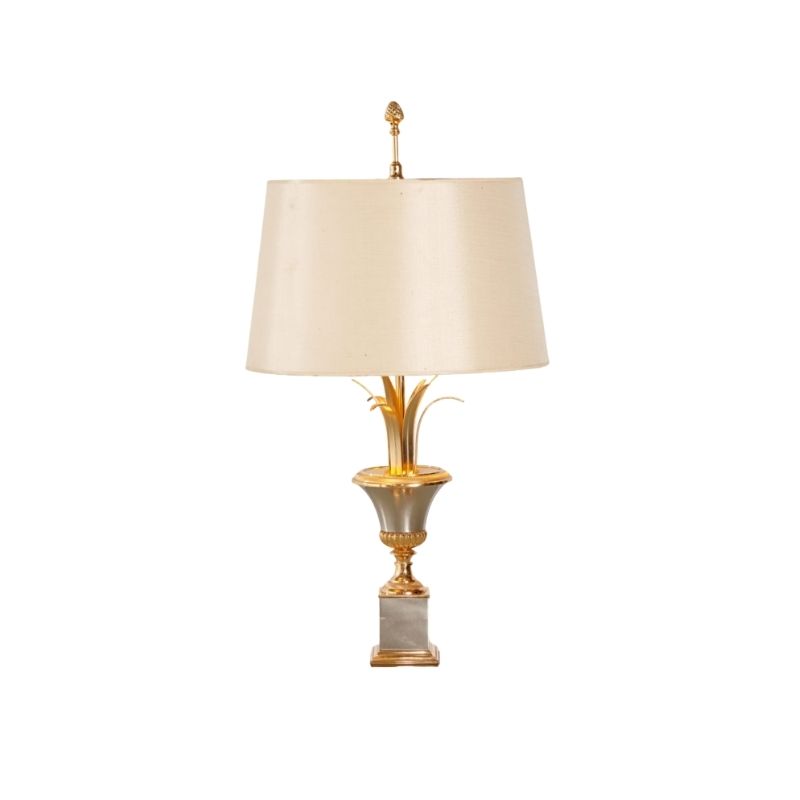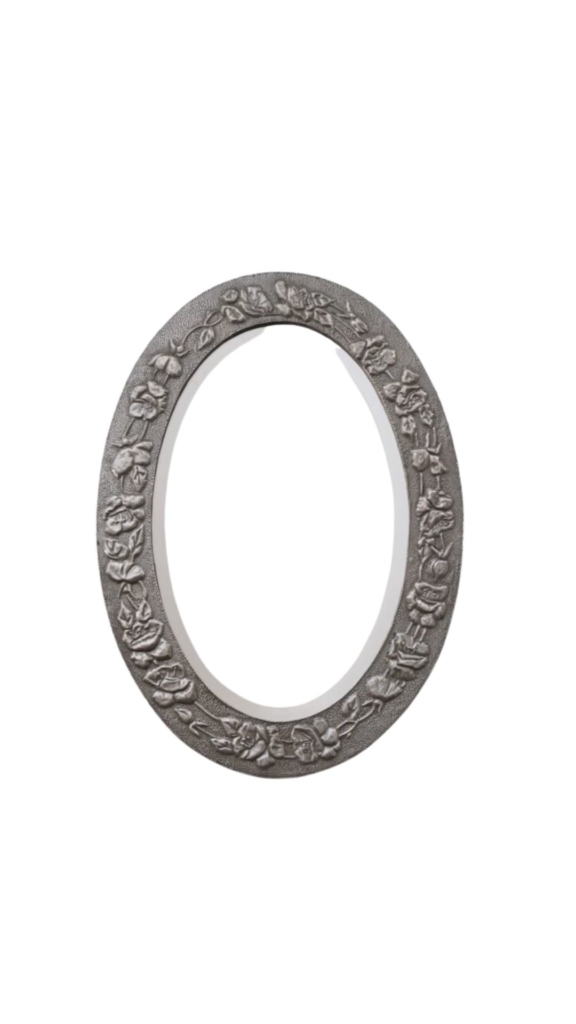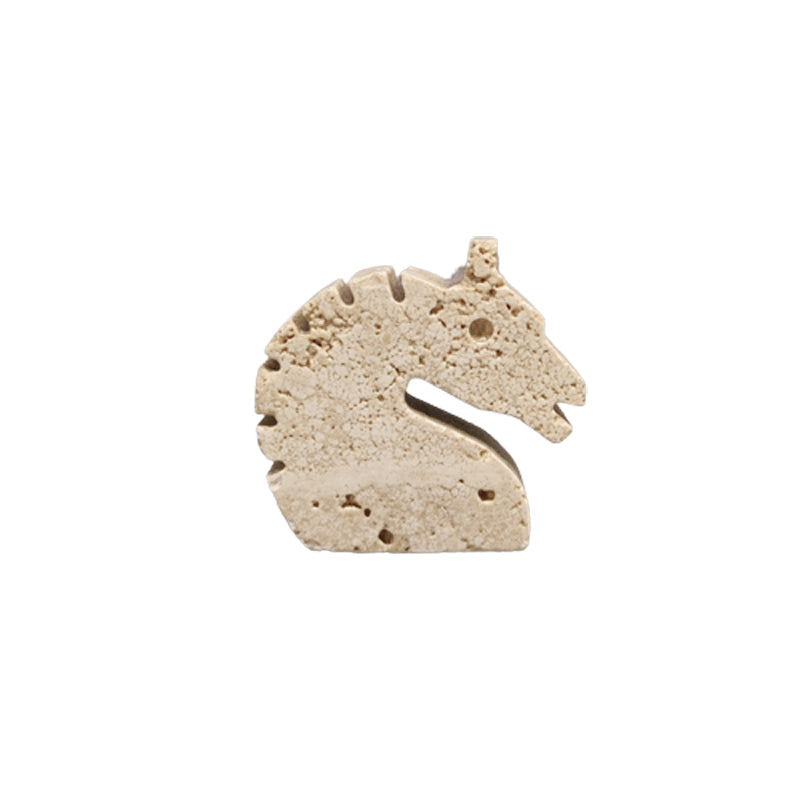Sticking with beech. Quartered and stained in this case. I like the look, FWIW.
http://www.hobbithouseinc.com/personal/woodpics/beech.htm
Go ahead, Leif. Make my day!
The removable spring assembly is beech I am fairly sure and has almost no visible grain nor is it stained. I don't believe the balance of the chair is beech however, but will differ to the majority. It was my understanding that they only produced rosewood and teak models. There are a few "ebonized" pieces searchable out there. Could this have been an ebonized version that was stripped and stained?
http://www.pamono.com/rocking-chair-by-ole-wanscher-for-france-son-1960s
I suppose it is possible that your chair has been stripped and stained, though I see no obvious evidence to support the notion. It is obvious, however, that it's neither teak nor rosewood, so it's anybody's guess.
A sharply focused closeup of the end grain would help to confirm species. The only other remote possibility would be one of the European oaks, but it appears as beech to my eye. Leif is better at wood IDs than I am, so go with what he says.
Of course, HowardMoon is quite reliable, too!
Nice unusual example either way.
The chair is a very early production and made from beech.
It is my understanding that the furniture offered by France & Daverkosen during the companies infancy was produced in beech and this chair probably dates from the time before teak and rosewood was introduced and used on an industrial scale by the company.
It looks quite stained to me. Photo 4 shows scratches that have absorbed more stain than the rest of the wood because the grain gets roughed up and becomes more absorbent. There's just a general uneveness to the color, too. And the one or two places where end grain are pictured look much darker, too.
I would consider getting it professionally lacquered in black and then get cushion covers made in a spectacularly beautiful Danish wool.
While the original beech finish might have been stained, I'm also going with the amateur stain job by a former owner. And I think the evidence is right there in the photos, in addition to the uneven stain job.
I have a Wanscher fd109/2 teak-stained beech settee with the same old France Daverkosen stamp. The stamp is an imprint brand that should be black and distinct from the adjacent wood. The stamp (as well as the nearby screw) in the OP's closeup photo appears to have stain on top and in the grooves.
But, with apologies to Aunt Mark, I could be wrong.
cd, the F&D/John Stuart stamp was apparently sometimes foil impressed, too, which could easily have been removed by stripping whereas carbon from hot branding would not.
http://shard1.1stdibs.us.com/archivesE/upload/8329/31_13/aad_3488/aad_34...
You're probably correct that the chair has been refinished.
P.S. The wood in the link to the stamp also appears to be beech, no? Perhaps these examples aren't as unusual as I imagined.
I will agree with everybody that it is beech. Stained beech. It is exactly as HowardMoon say (he is the authority) an early France and Daverkosen piece designed by Ole Wanscher. It is model 110. Model 109 is the related armchairs that could be stretched into a settee (2 seat sofa) as model 109/2. It is possible it might have been stretched further at some point as 109/3 or 109/4, but I don't have proof of that, just the knowledge that other such models were stretched to those lengths.
As to the stain, I am not certain, but I strongly think it has been stripped and re-stained. The color on there right now looks a lot like what you would get with a "dark walnut danish oil." Basically more of the color in the oil finish deposits in the more porous parts of the wood, and the rays in the wood, being very dense, absorb very little of it. So the rays remain very light while the rest of the wood darkens. By contrast what I believe the Danes generally did with beech was to seal the wood with a clear sealer of some sort, and then apply over that, a colored finish. This resulted in a more even tone to the wood. Selig chairs were also done this way.
Here is an example of a chair that I doubt has been re-finished, note the different tone of the finish, and most especially the lower contrast difference between the rays and the rest of the wood:
http://www.adoremodern.com/objects/seating/beech-wood-easy-chair-by-ole-...
Finally, I don't think that these earlier stamps were foil impressed (having gold in the impression), so I don't think that tells us a lot. I will look around and see if I can find an earlier stamp like this to correct myself.
And I think I actually prefer the wood done the way this chair is. I actually really like the rays in beech. I would like Danish stained beech piece more if they were all done this way.
tktoo, it is the piece of wood at the bottom of the frame of photo 1 that convinces me more than anything else that the chair is stained. The color is very uneven on this piece and the color doesn't follow the wood grain at all. I would guess that whoever stripped the original finish was getting tired of the process and left the underside only half done. The stain didn't soak in where there were patches of original finish. I've done this myself (not on anything of value!) so it's a very familiar look to me.
I like the rays of the wood too but the stain has to be even to look natural, otherwise what's the point? I still vote for black lacquer!
Thank you for taking the time to respond to my inquiry. I agree that the wood is beech. I also agree that it was either stained or dark oiled post production.
Although beech is not classified as "exotic", I would have to say that the choice of the particular pieces used in the building of the chair certainly rank an "extraordinarily unique" if not exotic. I can not imagine putting a coat of paint over these incredibly beautiful grain patterns.
As you already know, this chair disassembles. I was not aware of that fact. Once I got a side off it was easy to tell the original finish.....particularly because the DIY sinner applied the finish without dis-assembling it. How they managed to do this, I have no idea. The chair was simply clear oiled in it's original state.....a couple shades lighter than present.
Unfortunately, I will not be the one to decide the fate of this chair. I must part with it. Regardless, it was quite a score for here in Montana where "vintage" furniture generally implies a wagon wheel motif. I walked right by it the first time, but something pulled me back. It had the most horrendous fabric you can possibly imagine. A scarring 90's Bill Cosby sweater fabric. When I got it back to the shop, I unzipped the cushion to find the originals intact and in pretty decent condition.
Thanks again for your input. I am uploading some photo for posterity.
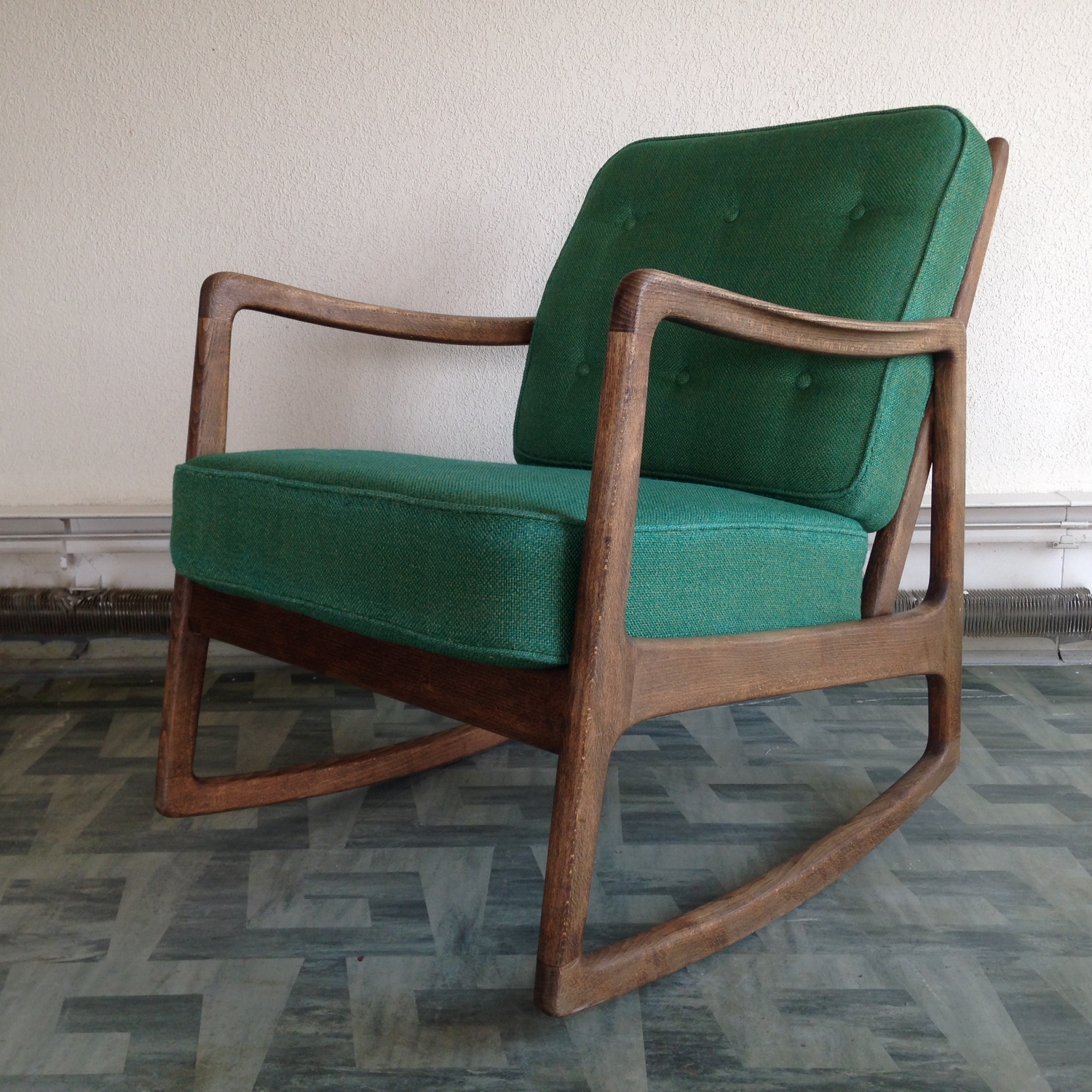
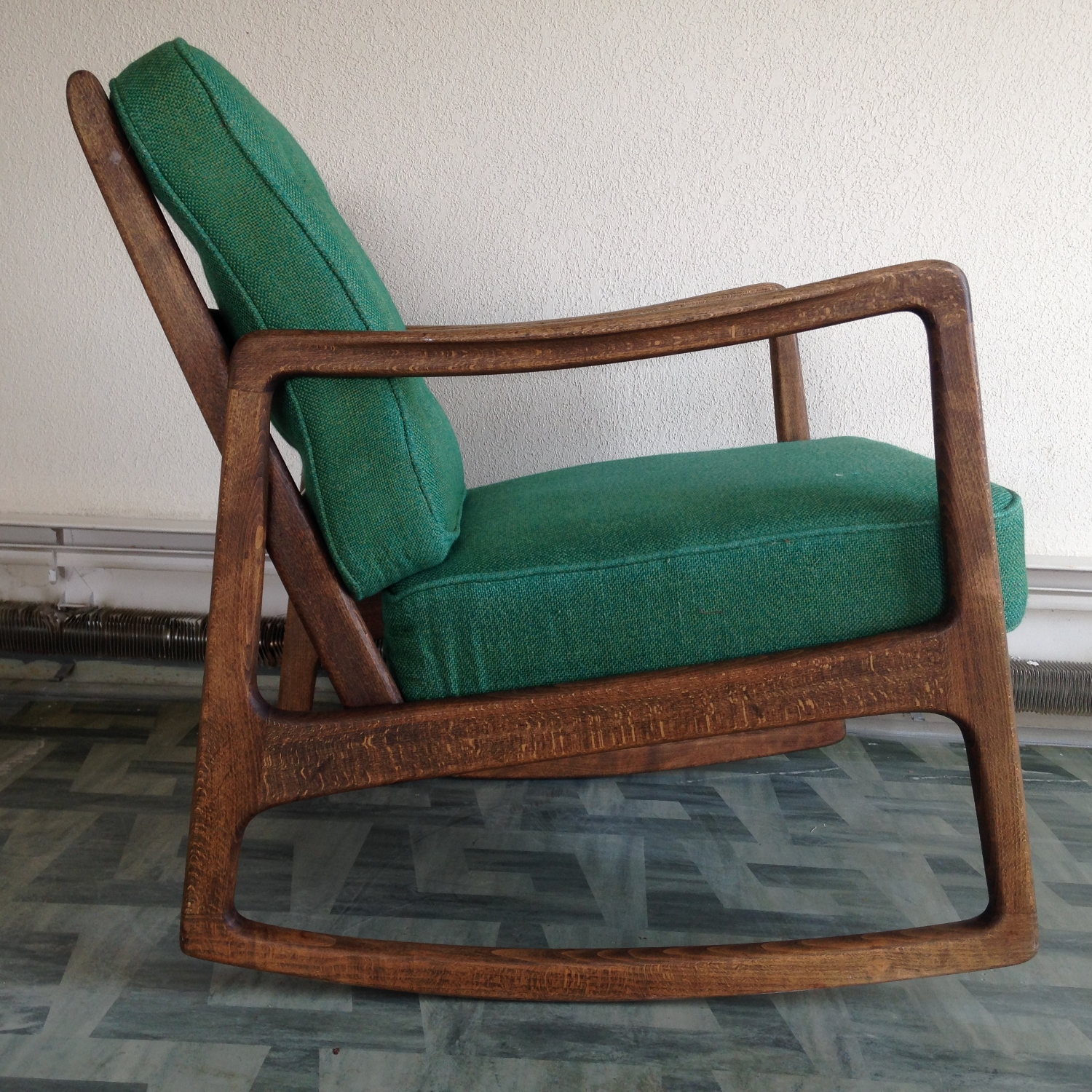
If you need any help, please contact us at – info@designaddict.com


 <img class="wpforo-default-image-attachme
<img class="wpforo-default-image-attachme

